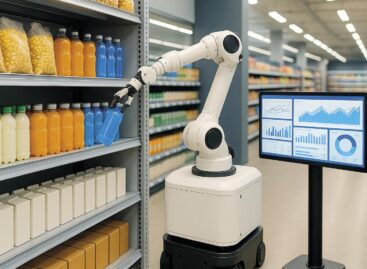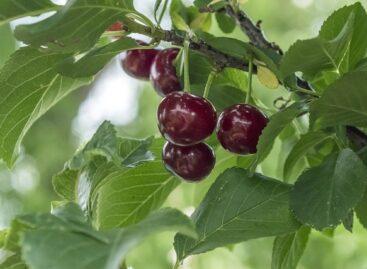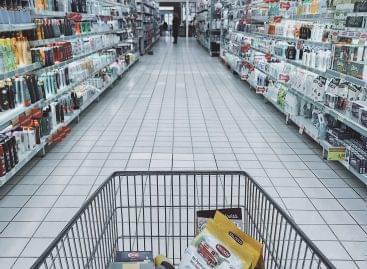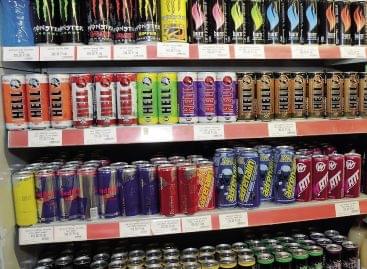The extreme drought further deepened the crisis in the fruit sector
The effect of this year’s historic drought was reflected in the condition of all fruit varieties. Among the fruits grown in the largest quantity, apples are expected to have the worst harvest of the last decade, 300,000 tons, and in the case of cherries, a significant part of the approximately 60,000 tons of fruit did not reach the size required for processing. As a longer-term effect of this year’s drought, the process of decreasing domestic fruit-growing areas may accelerate further.
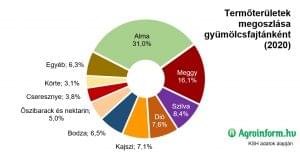
In contrast to previous years, this year it was not the late frosts, but the century-long drought that caused outstanding damage to the domestic fruit sector. As a result of the water shortage in the deeper layers of the soil, which has been getting worse since last summer, most of the fruits did not reach the ideal size and content value. According to the FruitVeb Hungarian Vegetable and Fruit Association and Product Council, 42 percent less apples will be harvested this year than last year’s 520,000 tons, only about 300,000 tons, the drop will be particularly significant in terms of apple juice. As in previous years, the volume of this year’s cherry crop is only around 60,000 tons, but while in previous years the spring frosts caused significant crop losses, now the drought decimated the crop. The situation is further aggravated by the fact that only a part of the produced quantity reached the 18 millimeter size required by the processing industry. In the case of fruit varieties with a smaller production area, the picture is more mixed. Due to the lack of late spring frosts, the expected value of the plum harvest may be around 55,000 tons, which is slightly below the average, but peaches and apricots have been harvested this year in much larger quantities than in previous years: the latter’s yield of around 25,000 tons is not a record, but compared to previous years can definitely be classified as an outlier. It produced 17,000 tons of pears, which is a slight increase compared to last year’s 16,000 tons, and the total yield of around 10,000 tons of cherries can also be classified as a good result. Watermelons produced in largely irrigated areas also produced an adequate amount, 120,000 tons, this year, which covered domestic and export needs. But the high heat had adverse effects here as well: the yield averages fell, and the faster ripening yield resulted in a shorter, more intense season than usual. “Unfortunately, the drought not only has a negative effect on this year’s harvest, it also strongly influences the amount of next year’s harvest,” pointed out Ferenc Apáti, the president of FruitVeb. – Weakened fruit trees with only limited access to nutrients do not have the energy to grow a sufficient number of flower buds, which is a condition for next year’s crop.
Declining production areas, rising prices
This year’s drought further worsened the long-term outlook for fruit production. In addition to climate change, which increases the frequency of spring frosts in addition to drought, the sector is also suffering from a severe labor shortage and the continuous aging of plantations. As a result of all of this, forecasts were already made last year, according to which a decrease of up to 20 percent in the size of the fruit-growing areas at the national level is predicted in the next 4-5 years. This process may be further accelerated by the economic difficulties caused by this year’s drought. In the current economic environment, local initiatives such as “take it yourself” actions and campaigns encouraging the purchase of local and domestic products can be a positive shift in demand. Experts emphasize the importance of technological development in addition to conscious consumer behavior for survival. – In the long term, only those intensive plantations have a future, in which protection against frost and ice damage, as well as irrigation, is at least partially solved – Ferenc Apáti added. – Risks can only be avoided in the future with a significant capital investment and the possession of appropriate expertise.
At the same time, the cost of modern technology will be legally incorporated into the price of fruits, which means that we will have to expect continuously rising prices on the fruit market in the long term.
Related news
Dr Tamás Kozák: “High inflation casts a long shadow”
Our magazine asked Dr Tamás Kozák, general secretary of the…
Read more >This year’s melon season has started, juicy Hungarian cantaloupe and honeydew melon are now available
Although the cool spring delayed the start of the domestic…
Read more >Low sour cherry harvest expected across Europe this year
Experts are predicting significant crop losses in sour cherry producing…
Read more >Related news
What makes us add the product to the cart – research
The latest joint research by PwC and Publicis Groupe Hungary…
Read more >Energy drinks are now legal: what every shopkeeper should know
New regulations on the sale of energy drinks came into…
Read more >Tens of millions with one opening tab – the biggest prize draw in XIXO history has started
This summer, XIXO is preparing for a bigger launch than…
Read more >
